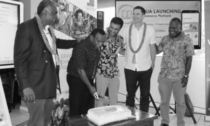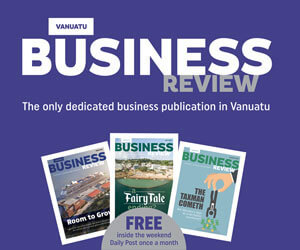A Fairy Tale ending?
July 1, 2016 3:03 pm | Posted in Features | Share now TwitterFacebook
Ugly duckling, Goldilocks, Or Alice through the looking glass? How will Vanuatu’s economic story unfold?
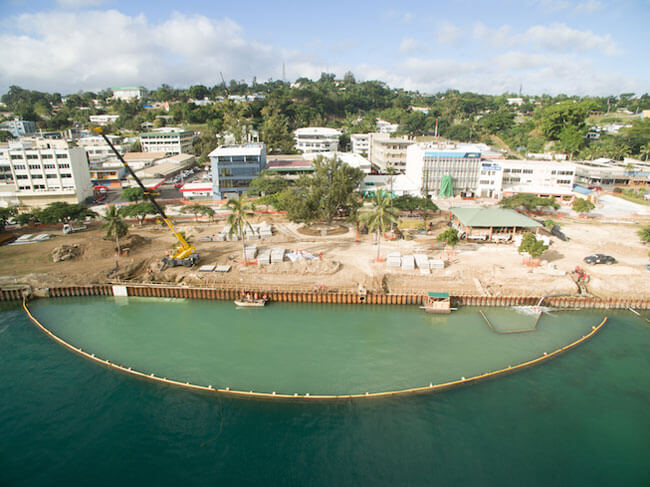
Like Cinderella casting off her rags before the ball, Vanuatu is intent on writing itself a new story. Gone is the mindset that told us to sell the cow for a handful of beans. Today, we’re undergoing a transformation— an unprecedented level of infrastructure and development investment. But one lingering question remains: Are we Goldilocks getting things just right, or are we Alice, about to tumble down the rabbit hole?

No more never-never land
For better or for worse, Vanuatu is no longer the timeless, untouched paradise it used to be. The list of development projects currently under way is dauntingly long for a country as small as ours.
For starters: Wharf repairs, upgrades and construction in half a dozen harbours; two airports on the verge of transformative upgrades; repairs and refurbishment on another; new roads on several islands; power grid extension on Efate and Malekula; road and drainage work in the capital.
Then there’s a new convention centre, a sports facility, a brand new Prime Minister’s office and Finance ministry, inter-island shipping support services, new financial service bureaus in the islands, and the Universal Access Policy, which promises broadband internet to 98% of the population in the next year and a half.
On top of that, there are the countless schools and health facilities awaiting repairs and upgrades in the wake of cyclone Pam.
And that’s just what’s on the books right now.
Private sector investment has been mostly middling to small over the years. The most notable exceptions are Digicel’s US$30 million1 outlay in its inaugural year, and the roughly $30 million spent in pulling a fibre optic cable from Fiji.
In fairness, though, the International Finance Corporation—the commercial finance arm of the World Bank— provided most of the funding for Digicel’s entry into the Pacific, and our own national provident fund is currently the largest shareholder in Interchange, the cable operator.
But that’s likely to change. There’s a long shadow looming over this narrative. Investor interest is at an all-time high, and these days, it’s aimed at projects of larger scope and scale than we’ve ever seen.
From too cold to too hot?
The question is: How much change can we take without getting burned?
Matthew Dornan is deputy director of the Development Policy Institute at the Australian National University. He is the co-author of a number of studies looking at the costs and opportunities of infrastructure investment in Vanuatu and throughout the Pacific.
While he cautions about the cost of maintaining infrastructure, his primary concern for Vanuatu right now is the rapidity of its economic growth. With hundreds of millions of dollars pouring in, and the majority of its citizens only tenuously tied into the cash economy, the risk of an inflationary spiral is real, and the result could be damaging to the country’s stability.
He admits with a rueful chuckle that the much-maligned ‘boomerang’ aid—development spending that lands back in the donor country’s banks— has a perversely positive effect. Because so little of infrastructure spending actually stays in Vanuatu, the inflationary pressures aren’t as damaging as they might be.
Nonetheless, Dornan argues against complacence. These large-scale infusions may result in a rapid rise in GDP, but they mask economic weakness in other sectors, particularly agriculture and tourism, which are responsible for the majority of livelihoods.

Paying for the pumpkin
There are few fairy godmothers in the real world. Even if we transform our pumpkin economy into a carriage capable of carrying us all, we still need to pay for the ride.
The country’s external debt load is rising sharply, and it’s not clear whether this new spending is getting the scrutiny it requires. In a 2013 discussion paper, the Pacific Institute of Public Policy wrote:
On 31 August 2012, a tiny but crucial change to Vanuatu’s Public Finance and Economic Management Act came into force. The amendment altered one piece of punctuation and a single sentence. It also effectively removed parliamentary oversight prior to the government signing on to new debt. The day this amendment came into effect, the caretaker minister of finance signed a loan agreement worth nearly USD 11 million with the Asian Development Bank….
The amendment also cleared the way for a number of memoranda signed in the preceding months with Chinese contractors for lavish rural infrastructure projects. Under the new legislation, Parliament–and the public—won’t be shown the details of these loans until it’s too late.
Between 2010 and 2016, Vanuatu’s external debt more than doubled, from just under $11 million to more than $24 million. Current liabilities on the books are a significant multiple of that amount. The Lapetasi wharf project alone will cost almost $90 million, and the total bill for the repair, refurbishment and upgrade to Bauerfield airport will run close to $60 million. The Tanna road project will cost the country $53 million. The estimated cost of the Santo wharf was $93.4 million.
A 2015 report from the IMF shifted Vanuatu from ‘low’ to ‘moderate’ risk of debt distress. That’s not the end of the world. In fact, none of the experts we spoke to seemed fussed about it at all. The IMF went on to say that the “increase is expected to be manageable provided that financing terms are concessional and the surge in financing needs is temporary.”
But one expert with experience managing the country’s finances admitted “there could be severe debt servicing issues.” As the IMF report shows, Vanuatu doesn’t have an issue with the volume of debt, “but does have a potential cash flow issue. Unless the revenue base expands [through] new initiatives or fast economic growth, there could be a problem.”
Population vs GDP Distance

This year, Vanuatu will spend more money servicing its debt obligations than on health and education combined. The national sustainable development plan, currently nearing completion, calls for stringent measures to be put into place to ensure that our debt doesn’t rise above 40% of GDP. We’re already north of 30%, and will likely pass the 40% point in 2018.
In fairness, this brief excursion north of 40% is partly a result of cyclone Pam recovery. But this is the problem we face. Our economy is more vulnerable to risks such as climate-caused natural disaster than almost any other nation.

Blowing the house down
If, heaven forbid, we should face another annus horribilis like 2015, there’s a small but significant chance that the shock could knock our economy right over. If a sufficient number of investors and institutions lose faith in our ability to keep the payments coming, we could face severe, cascading consequences.
The more we invest, and the more debt we hold, the more at risk we are.
The IMF has intimated that donors and development partners should be offering grants as well as loans. And to their credit, some have listened.
But we don’t just need to act differently; we need to plan differently.
A research paper prepared for the World Bank and presented at a 2011 conference in Suva made an often-overlooked point:
Vanuatu and its neighbours often get tossed into the same bag as Caribbean countries, but our circumstance are not at all the same. In a nutshell, the distance to markets and the tiny size of our economies mean that standard economic development models simply don’t apply.

Using a concept known as Distance Weighted GDP— basically, factoring transport costs and distance-based inefficiencies into economic and trade calculations—the researchers demonstrated that there is a qualitative as well as quantitative difference.
Our exports will never be globally competitive. Between small volumes, time and expense— not to mention the protectionist tendencies of our two nearest developed neighbours—the prospects for agricultural exports amounting to anything significant are limited, to say the least. And yet, most of the northern islands’ economy is still hitched to the copra wagon.
That’s a hard problem to fix. Our diminutive size means that the cost of diversification is vastly higher than elsewhere in the world—completely out of scale with most people’s conceptions about new business models. This realisation doesn’t figure largely enough in people’s minds.
Our ugly duckling economy isn’t ever going to blossom into a beautiful swan. At best, we’ll just be a prettier duckling.

Someday our prince will invest
Just like Sleeping Beauty, our economy seems doomed to rely on outside intervention to revive it. Some investment promoters have been downright shameless in their search for a Prince Charming, and more than one foreign interest has copped a proverbial feel. But so far, no one has agreed to give us the financial kiss of life.
That may be about to change. Airports Vanuatu Ltd recently circulated a call for expressions of interest in significant upgrades to Bauerfield airport.
Spokesman Adrian Sinclair confirmed that ‘about 20’ expressions of interest had been received. “We’ve got a sort of a League of Nations expressing interest at this stage,” he added. “We’ve got the usual suspects— Australia, New Zealand, China and so on, but also France, Korea and elsewhere.”
A number of approaches were being signalled, Sinclair said. Some were quite specific about where their interest and their expertise lay, while others were omnibus proposals covering supplementary development projects as well, including hotel and business facilities.

Other sources have related that there are serious investigations being conducted into building up Santo’s Pekoa airport as a companion to relatively largescale resort operations.
It’s too early to draw many conclusions from this flurry of bids, but the wide variety of bidders, and the scale of their proposed commitment, indicates that maybe we’re not just dreaming. Maybe we can actually become the fairest tourist destination of them all.
The value proposition is sound: Own the customer from the moment they step out the door to the moment they return.
If the price is not too small, this can result in just the right amount of revenue. We will never compete with Fiji or Bali where low-priced excursions are concerned, but for mid- and high-end customers, Vanuatu offers a setting that easily rivals its neighbours.
The real question is capitalisation. The scale of private investment would have to be in the hundreds of millions, and the potential for economic disruption equally large. Even if the debt is privately held, problems servicing it could easily be felt nationwide.
But with nearly $60 million already committed to upgrading the runway to handle wide body aircraft, this fairy tale scenario is becoming that much more real.

Making the shoe fit
There are still major obstructions. One of them is the oversize cost of feeding tourists. An unnecessarily large proportion of our food is still being imported.
The ANU’s Matthew Dornan suggests that Vanuatu farmers and agricultural workers would be well served to leverage their land to support tourism. “It’s just silly,” he says, “that resorts and hotels should have to import so much of their fresh produce.”
Agritourism is a hot topic among development strategists. A conference earlier this year in Brussels sponsored by the EU provided the impetus for a flurry of effort in developing an agriculture strategy aimed at tourism. The endeavour even has its own Facebook page.
While many of the announcements seem far too clever by half—one article examines the potential for drone use in agritourism—the fundamentals are clear: People love organic products, and we’ve got them. Whether or not we turn our plantations into petting zoos, our local products are still desirable, and that should be capitalised upon.
If you’re running a large resort here in Vanuatu, it makes abundantly good sense to invest in local food supply.
But making this happen will require a concerted effort to adjust land-use approaches, develop business skills, and to provide supporting infrastructure and services good enough to maintain a timely and sufficient supply chain.
There is some work being done here. The Vanuatu Project Management Unit, which operates under the auspices of the Prime Minister’s Office, will shortly embark on works projects to construct or improve wharves across the country.
In some places, this might be just enough. Improved access to power, water and roads has done wonders for Luganville’s market, which overflows with low-cost, high quality produce. Malekula will soon have an expanded grid, better roads and an upgraded wharf. While it probably won’t be the belle of the ball, it could serve as Santo’s handmaiden if large-scale tourism takes off in the northern town.
Making the economic shoe fit just right is not a simple task. Port Vila still struggles to supply itself with even basic commodities such as chickens and eggs, and that’s in spite of several efforts over the years. Better roads haven’t sufficiently reduced the cost of transport, and even as the drought recedes, prices in the market remain shockingly high.
It’s more than likely that communities and smallholders will have to make some hard decisions about the scale of their operations and the way their land is managed in the months and years ahead. This is certain to stress traditional values and approaches to business.
Two sizes too small
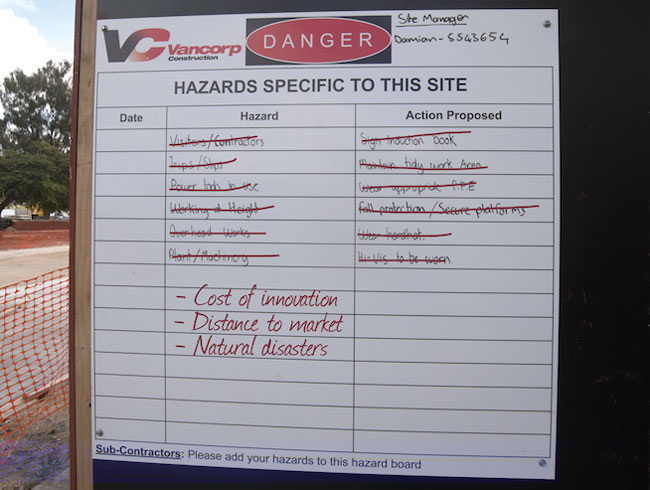
Vanuatu’s economy is beset by bottlenecks, and most of its current projects are aimed at addressing them. Not all succeed equally, and experts are arguing that some don’t do nearly enough.
The Port Vila Urban Development Project has already begun restoring many of Port Vila’s arterial roads. The government has contributed $US5 million to the project, while the ADB and Australia will contribute the remainder, amounting to $31 million.
Some might say that this was the least they could do. The road renewal project was signed within months of the first payments coming due on a $10 million ADB loan for a road project with a nearly identical remit. But according to the ADB’s own report, “[i]nsufficient attention was paid to the drainage requirements of the urban roads component.” That’s a bit of an understatement.
This isn’t the only time we’ve found ourselves paying twice for our collective failure to ensure good results.
It might not be the last time, either. Price tag notwithstanding, many people have expressed concern that the urban development project isn’t nearly ambitious enough. It ignores chronic drainage and sanitation issues in the Seven Star and Ohlen neighbourhoods, focusing instead on the Kumul and Lini highways. And while it does take measures to ease the flow of heavy traffic around the city centre, it punts on what some local business people consider to be the critical bottleneck: the single lane traffic passing in front of the Port Vila Market.
One person involved in chasing up foreign investment said he was disappointed that downtown Port Vila was condemned to remain ‘a parking lot’. He suggested that authorities would have to take the bull by the horns sooner or later, and that the failure to do so this time amounted to kicking the can down the road—and there’s not a lot of road left.
A local casino operator said he had plans to transport his high rollers from airport to resort by helicopter rather than have them witness Port Vila in its rags.
Happily ever after?
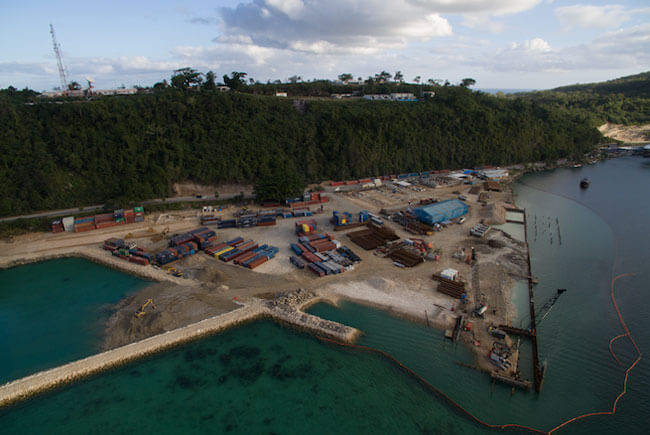
Not all debt is created equal. Some of the investments outlined in this story have rock-solid business cases. Others, not so much. The Santo wharf was budgeted at nearly $100 million, and while a department of Finance found the investment worthwhile, the repayment terms are significantly worse than those of the Lapetasi wharf project in Port Vila.
Likewise, trying to make an economic argument for the $50 million Tanna road project stretches credulity. The amount of economic activity generated in the south simply isn’t on that scale.
One World Bank study of small economies argues that the solution to such problems is simple: Stop trying to make such projects pay. Developed nations should accept that roads, wharves and telecommunications are all baseline necessities, but that micro-economies won’t ever be able to afford them. The global community should just pay up.
The amounts involved, the paper says, would hardly register on the global bottom line. And it’s not like we’d be setting any kind of dangerous precedent; there are only a few micro economies in the world, and their number isn’t going to change.
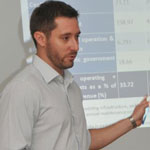
Asked if this is a common point of view among development experts, the ANU’s Matthew Dornan laughs and says, “No.”
But the latest IMF report does at least implicitly suggest that grants should continue to be a significant element in Vanuatu’s development investment plans. And our leaders have argued convincingly that Vanuatu is paying for the developed world’s sins as we suffer disproportionately from the effects of climate change.
That hasn’t translated into coherent international policy just yet, but institutions and donor partners are certainly open at least to the principle of using cash flows to offset the damage wrought by global warming.
Despite these many cautions, people are more optimistic—and more ambitious—now than they have been for years. It may be too soon to ring the palace bells and ride off to our happily ever after. But it is clear that Vanuatu is coming of age, and might just be ready to cast off its rags.
1 For consistency’s sake, all cash amounts will be expressed as us currency


